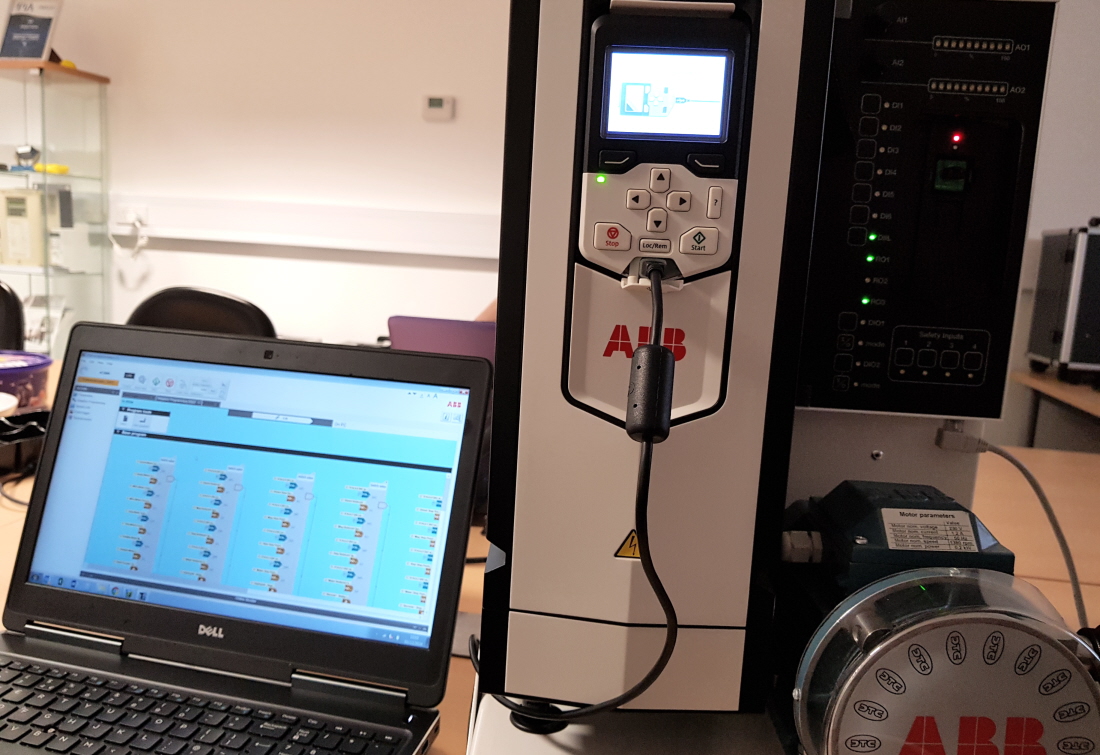Five Things You (probably) Don’t Know A Variable Speed Drive Can Do
Most users buy a variable speed drive (VSD) to start/ stop a motor and make it go faster/ slower. Very few know about the other functionality within their drive. Stuart Foster, UK Water Manager – Drives, ABB Limited, gives an insight.
1. Adaptive programming
Some VSDs contain a feature called adaptive programming. The programme is built with standard function blocks included in the drive firmware and can be used to customise the operation of a VSD. This includes helping to resolve technical challenges retrospectively. For instance, a UK water utility tried an emergency stop shut down on a new large set of pumps, but the harshness of the stop caused the building to vibrate. Using adaptive programming, the drive was cooded to detect stop situations and come to rest more steadily.
Without adaptive programming the cabinets would have needed to be re-wired and the project delays would have been hugely expensive.
2. The hidden gems inside
Often panel builders or OEMs will purchase a host of components without realising that they are already contained in the VSD. For instance, a panel builder will need thermostats for controlling cabinet fans to save standby losses, timer relays, contactors, doormounted HMIs and a mini PLC to control the system to behave at different times of the day. Yet all these components, and more, are often not needed as they are already built within the VSD.
3. Smart safety
Today’s VSDs offer several features and functions that increase safety for plant operatives. One example is safe torque-off (STO), a SIL 3 PL e stop function that is safer than, and avoids the need for, a contactor, for example in emergency stop situations. With some drives, STO
can also be supplemented with additional drive safety functions, such as safely-limited speed, which prevents motors from exceeding a defined speed limit, and safe stop.
The arrival of Bluetooth-enabled keypads, meanwhile, is transforming the maintenance of VSDs in hazardous or hard-to-reach areas. By downloading the manufacturer’s app to a smartphone or tablet, the user is able to wirelessly connect to multiple drives and execute any task they could accomplish by directly accessing the keypad, including commissioning, tuning and maintenance.
Bluetooth is typically functional up to 75 metres from the drive in any direction. This significantly
reduces the need for maintenance staff to enter confined or hazardous areas.
4. Automatic back-up
As well as two manual backups, some VSDs perform an automatic backup regularly, so settings are always stored. Should a problem occur, the latest parameter settings can be downloaded via the drive’s keypad and reinstalled in minutes. This avoids having to recommission the drive, thereby minimising downtime.
5. Improving maintenance
Today’s VSDs can point the way to developing a preventive maintenance strategy for pump applications. This is achieved by the drive’s ability to monitor key parameters – such as temperature, current and torque – in real time. Using this data, in conjunction with process
variables such as flow or pressure, the end user is able to determine the efficiency of the system and also identify potential problems before they occur.
ABB (ABBN: SIX Swiss Ex) is a pioneering technology leader in power grids, electrification products, industrial automation and robotics and motion, serving customers in utilities, industry and transport & infrastructure globally. Continuing a history of innovation spanning more than 130 years, ABB today is writing the future of industrial digitalization with two clear value propositions: bringing electricity from any power plant to any plug and automating industries from natural resources to finished products. As title partner in ABB Formula E, the fully electric international FIA motorsport class, ABB is pushing the boundaries of e-mobility to contribute to a sustainable future. ABB operates in more than 100 countries with about 147,000 employees. www.abb.com

